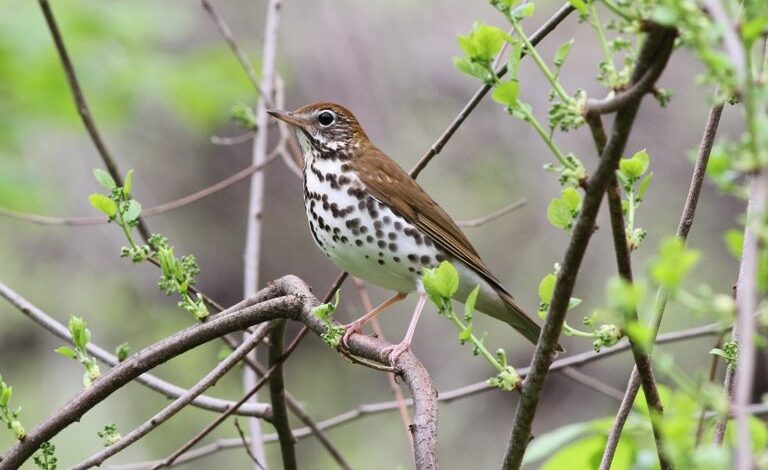
Wood thrush. Image Credit: Courtesy of Michael Parr / American Bird Conservancy
Animals USANew Program Gives Special Attention to Diverse Birds, Trees, and Sustainable Syrups
In Vermont, United States, a relatively new program is improving forest habitats, boosting bird species diversity, and encouraging the sustainable production of maple syrup.
“Retaining at least 25 percent non-maple species and creating structural diversity in a sugarbush are powerful strategies for bolstering the populations of birds and other forest species,” says Aaron Wightman, lifelong maple producer and co-director of the Cornell Maple Program.
Due to a rise in the maple syrup industry over the past 15 years in the United States and Canada, many farmers favoured planting sugar maple trees at the expense of other tree species that diversify forests. Vermont’s Bird-Friendly Maple Project is tempting to change that, emphasizing that the diversity and abundance of birds within the area relies heavily on the diversity of trees. Essentially, the project treats agriculture more like a functioning ecosystem and less like a “food factory,” a significant tenant within agroecology.
The Bird-Friendly Maple Project celebrates those producers who safeguard forest bird habitats and provide a unique label to be added to syrups purposely produced in diverse forest areas. For those maple producers hoping to achieve the bird-friendly label, no more than 75 per cent of their sugarbush composition can be sugar maple trees, among other regulations that promote the diversity of local forests and bird populations.



